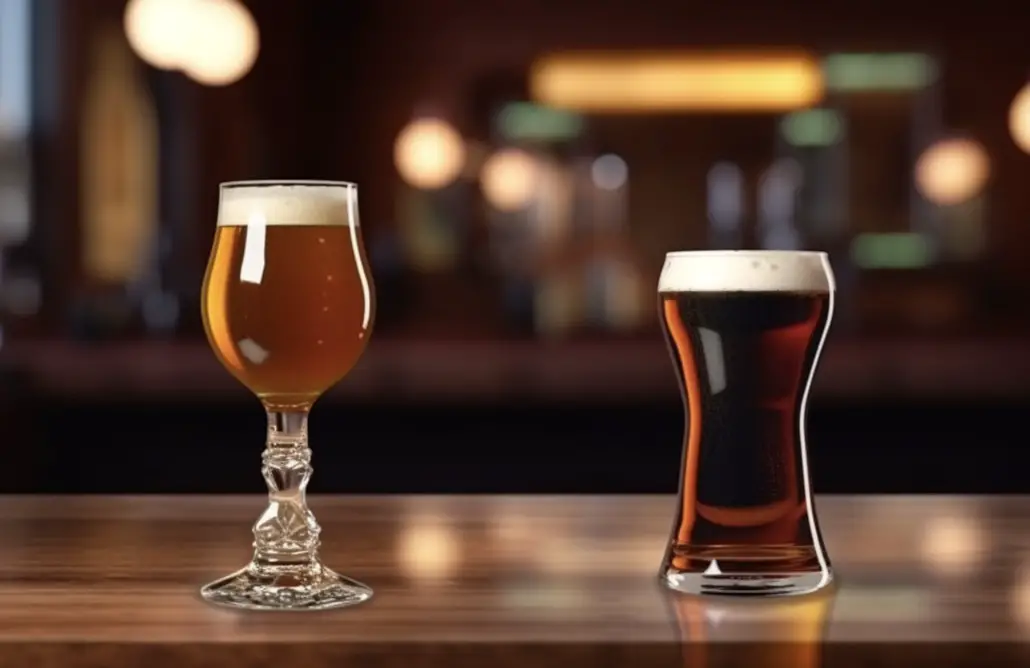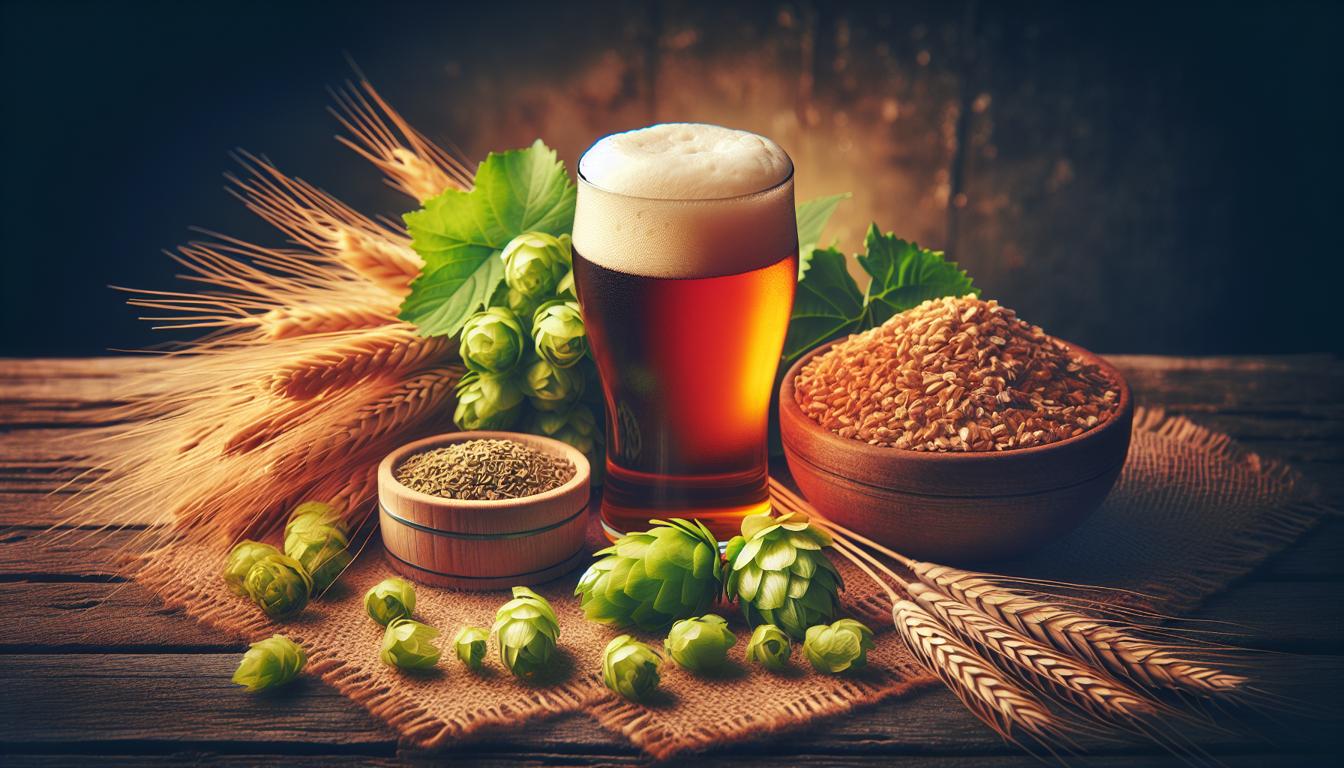The English Bitter is a traditional beer style that has been enjoyed for centuries in the United Kingdom. It is a prime example of the British brewing tradition and has a rich history and unique characteristics that set it apart from other beer styles.
A Brief History
The English Bitter originated in the early 19th century and gained popularity during the Industrial Revolution. During this time, beer consumption in England skyrocketed, and brewers sought to create a beer that was flavorful, refreshing, and had a lower alcohol content than other styles. The term “bitter” refers to the hop bitterness that balances the sweet malt flavors in the beer.

Key Characteristics
The English Bitter is a well-balanced beer with a moderate alcohol content and a range of hop bitterness. It typically has an amber color, a medium body, and a creamy, off-white head. The aroma is often described as malty, with notes of caramel, toffee, and biscuit. The flavor profile is characterized by a balance between the malt sweetness and hop bitterness, with a subtle fruity ester character from the yeast. The finish is usually dry, making it a highly drinkable beer.
Now, let’s dive into the brewing process and learn how to brew an exceptional English Bitter!
Recipe: English Bitter
Batch Size: 5 gallons (19 liters)
Original Gravity: 1.042 – 1.048
Final Gravity: 1.010 – 1.012
ABV: 3.8% – 4.6%
IBU: 25 – 40
SRM: 6 – 16
Ingredients
Malts:
- 8 lbs (3.6 kg) Maris Otter Pale Malt
- 8 oz (227 g) Crystal 60L Malt
- 4 oz (113 g) Victory Malt
Hops:
- 1 oz (28 g) East Kent Goldings (5% AA) – 60 minutes
- 1 oz (28 g) Fuggle (4% AA) – 15 minutes
- 1 oz (28 g) East Kent Goldings (5% AA) – 5 minutes
Yeast:
- British Ale Yeast (e.g., Wyeast 1968 or White Labs WLP002)
Water:
- Use a water profile that mimics the mineral content of traditional English brewing water. Consult your local water report and adjust as necessary.
Extras:
- Irish Moss or Whirlfloc Tablet – 15 minutes
Brewing Process
1. Mashing: Crush the grains and add them to a large mesh bag. Heat 3 gallons (11 liters) of water to 152°F (67°C) and add the bag of grains. Maintain this temperature for 60 minutes, stirring occasionally. After the mash, remove the bag and let it drain into the kettle.
2. Boiling: Bring the wort to a boil and add the bittering hops (East Kent Goldings) for 60 minutes. Make sure to adjust the heat to maintain a gentle rolling boil.
3. Hop Additions: After 45 minutes, add the Irish Moss or Whirlfloc Tablet to help clarify the beer. At 15 minutes, add the flavor hops (Fuggle). Finally, at 5 minutes, add the aroma hops (East Kent Goldings).
4. Cooling: After the boil, cool the wort rapidly to around 68°F (20°C). You can use an immersion chiller, a counter-flow chiller, or an ice bath to achieve this.
5. Fermentation: Transfer the cooled wort to a sanitized fermenter and pitch the British Ale yeast. Ferment at a temperature of 68°F – 72°F (20°C – 22°C) for approximately 7-10 days, or until fermentation is complete.
6. Conditioning: Once fermentation is complete, transfer the beer to a secondary fermenter or keg for conditioning. Allow the beer to condition for at least 2 weeks to allow the flavors to mellow and the carbonation to develop.
7. Bottling or Kegging: When the beer is ready, prime with sugar and bottle or transfer to a keg for carbonation. Aim for a carbonation level of 2.2 – 2.5 volumes of CO2.
Tasting Notes
The English Bitter is best enjoyed when served at a temperature of 50°F – 55°F (10°C – 13°C) in an English pint glass. When pouring, aim for a moderate head that adds to the creamy mouthfeel of the beer.
Upon taking the first sip, you’ll be greeted by the inviting aroma of caramel and toffee. The initial malt sweetness is quickly balanced by the hop bitterness, creating a harmonious blend of flavors. The biscuit notes from the Victory Malt add depth and complexity to the beer.
As you continue to savor each sip, you’ll notice a subtle fruitiness from the yeast, adding a touch of character to the beer. The dry finish leaves you craving another sip, making it a highly sessionable beer.
Brewing Tips
– Malt Selection: Use high-quality Maris Otter Pale Malt for the base malt. This will give your beer an authentic British character and enhance the maltiness of the beer.
– Hops: Choose traditional English hop varieties such as East Kent Goldings and Fuggle for an authentic bitter flavor. These hops provide a delicate balance of bitterness and aroma that perfectly complements the malt profile.
– Yeast Choice: Select a British Ale yeast strain such as Wyeast 1968 or White Labs WLP002. These strains produce the subtle fruity esters that are characteristic of the style.
– Water Chemistry: Pay attention to your water chemistry and adjust it to mimic the mineral content of traditional English brewing water. This will help achieve the desired flavor profile of the beer.
– Fermentation Temperature: Maintain a consistent fermentation temperature within the recommended range to ensure the yeast produces the desired ester profile. A temperature-controlled fermentation chamber is highly recommended.
– Conditioning Time: Allow the beer to condition for at least 2 weeks to allow the flavors to mellow and the carbonation to develop. This will result in a smoother and more enjoyable beer.
Conclusion
Brewing an English Bitter is a rewarding experience that allows you to delve into the rich history and flavors of traditional British ales. By following this recipe and paying attention to the key points mentioned, you can create a beer that is true to style and a delight to drink.
So, gather your ingredients, fire up your brew kettle, and embark on a journey to brew the perfect English Bitter. Cheers and happy brewing!
FAQs
Why is best bitter called best bitter?
Best bitter is called “best” because it was traditionally considered the best quality beer produced by a brewery. It is a term used to distinguish it from other types of bitters, such as ordinary bitters or special bitters, and indicates that it is the top-tier beer in terms of flavor, strength, and overall quality.
What is the strongest bitter?
The strongest bitter is typically considered to be Angostura bitters, which is a highly concentrated blend of botanicals and spices. It is often used in small dashes to add intense bitterness and flavor to cocktails.
What’s a good bitter?
A good bitter is a type of alcoholic beverage that typically has a strong, bitter taste due to the presence of botanical ingredients such as herbs, roots, and spices. Some popular examples include Angostura Bitters, Campari, and Peychaud’s Bitters. The choice of a good bitter depends on personal preference and the desired flavor profile for cocktails or other mixed drinks.
What is a good bitter for a drink?
A good bitter for a drink would be Angostura bitters. It is a versatile and widely used aromatic bitters that adds depth and complexity to cocktails, enhancing the overall flavor profile.
What is the best bitter in the world?
The best bitter in the world is subjective and dependent on personal taste preferences. Some popular contenders for the title include classic British bitters like Fuller’s ESB, Timothy Taylor’s Landlord, and Thornbridge Jaipur. However, there are also exceptional bitters from other countries, such as Sierra Nevada Pale Ale from the United States and Pliny the Elder from Russian River Brewing Company. Ultimately, the best bitter is the one that you enjoy the most.
What is the difference between best bitter and strong bitter?
The main difference between best bitter and strong bitter lies in their alcohol content. Best bitter typically has an alcohol content ranging from 3.5% to 4.3%, while strong bitter has a higher alcohol content, usually above 4.3%. This difference in alcohol content affects the overall flavor and strength of the beer, with strong bitter having a more robust and intense flavor profile.





Leave a Reply
You must be logged in to post a comment.